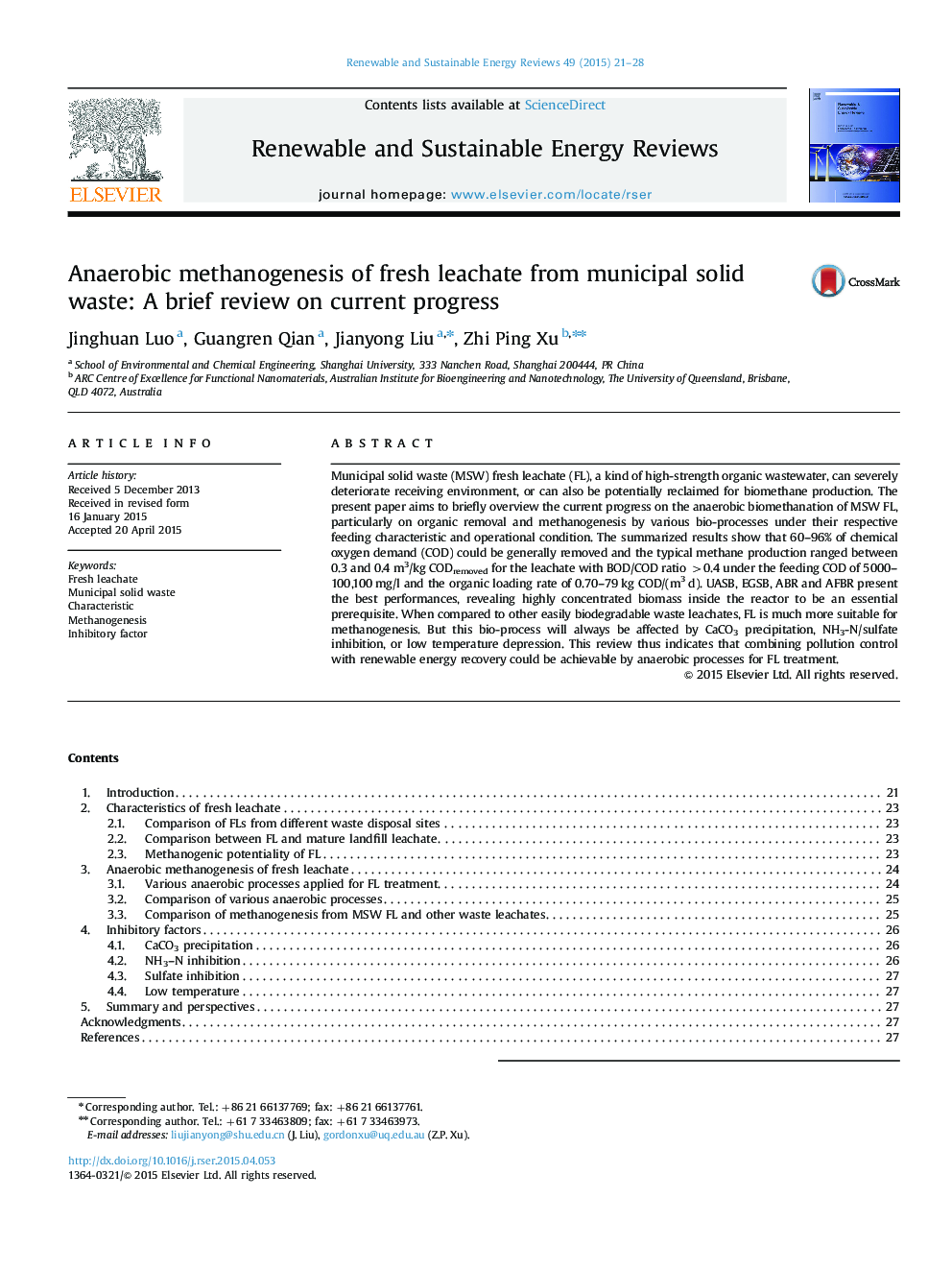| Article ID | Journal | Published Year | Pages | File Type |
|---|---|---|---|---|
| 8116215 | Renewable and Sustainable Energy Reviews | 2015 | 8 Pages |
Abstract
Municipal solid waste (MSW) fresh leachate (FL), a kind of high-strength organic wastewater, can severely deteriorate receiving environment, or can also be potentially reclaimed for biomethane production. The present paper aims to briefly overview the current progress on the anaerobic biomethanation of MSW FL, particularly on organic removal and methanogenesis by various bio-processes under their respective feeding characteristic and operational condition. The summarized results show that 60-96% of chemical oxygen demand (COD) could be generally removed and the typical methane production ranged between 0.3 and 0.4Â m3/kg CODremoved for the leachate with BOD/COD ratio >0.4 under the feeding COD of 5000-100,100Â mg/l and the organic loading rate of 0.70-79Â kg COD/(m3Â d). UASB, EGSB, ABR and AFBR present the best performances, revealing highly concentrated biomass inside the reactor to be an essential prerequisite. When compared to other easily biodegradable waste leachates, FL is much more suitable for methanogenesis. But this bio-process will always be affected by CaCO3 precipitation, NH3-N/sulfate inhibition, or low temperature depression. This review thus indicates that combining pollution control with renewable energy recovery could be achievable by anaerobic processes for FL treatment.
Related Topics
Physical Sciences and Engineering
Energy
Renewable Energy, Sustainability and the Environment
Authors
Jinghuan Luo, Guangren Qian, Jianyong Liu, Zhi Ping Xu,
